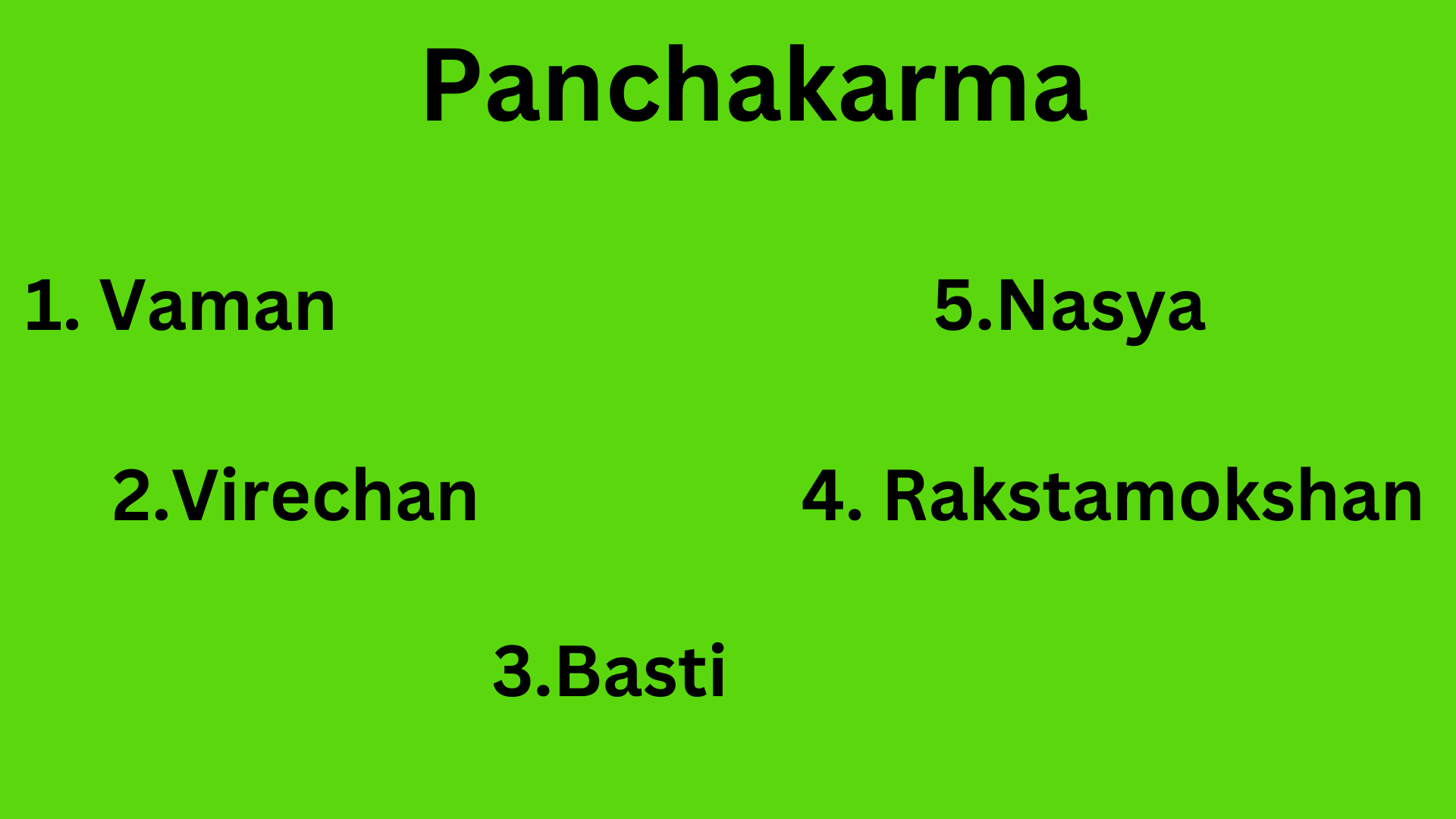Panchakarma

Ayurvedic Panchakarma is a comprehensive detoxification and rejuvenation therapy in Ayurveda, an ancient Indian system of medicine. It consists of five primary procedures, namely Vamana, Virechana, Basti, Raktamokshana, and Nasya. Each procedure has specific indications, methods, and benefits. Here’s a detailed overview of each:
Vamana (Therapeutic Emesis):
- Indication: Predominantly used to treat disorders associated with Kapha dosha imbalance, such as asthma, allergies, obesity, and skin disorders.
- Procedure: It involves controlled therapeutic vomiting induced by administering emetic substances like licorice, salt, or herbal decoctions.
- Benefits: Clears excess mucus and toxins from the upper gastrointestinal tract, improves digestion, boosts metabolism, and promotes weight loss.
Virechana (Therapeutic Purgation):
- Indication: Primarily used to treat disorders associated with Pitta dosha imbalance, such as jaundice, skin disorders, acidity, and inflammation.
- Procedure: It involves the controlled administration of purgative substances like senna, castor oil, or herbal decoctions to induce bowel movements and eliminate toxins from the body.
- Benefits: Cleanses the intestines, liver, and blood, balances Pitta dosha, improves digestion, relieves constipation, and purifies the blood.
Basti (Therapeutic Enema):
- Indication: Used to treat a wide range of disorders associated with Vata dosha imbalance, such as arthritis, constipation, neurological disorders, and urinary problems.
- Procedure: Involves the administration of medicated oils, herbal decoctions, or other substances into the rectum to lubricate the intestines, soften stools, and eliminate toxins.
- Benefits: Nourishes and strengthens tissues, lubricates the colon, balances Vata dosha, relieves constipation, improves digestion, and enhances overall vitality.
Raktamokshana (Bloodletting Therapy):
- Indication: Typically used to treat disorders associated with blood impurities or localized toxins, such as skin diseases, eczema, herpes, and gout.
- Procedure: Involves the controlled removal of a small amount of blood from specific sites on the body using techniques like venesection, leech therapy, or needle pricking.
- Benefits: Purifies the blood, removes toxins, improves circulation, reduces inflammation, and promotes healing of skin disorders.
Nasya (Nasal Administration):
- Indication: Primarily used to treat disorders affecting the head, neck, and respiratory system, such as sinusitis, migraine, allergies, and insomnia.
- Procedure: Involves the administration of medicated oils, herbal extracts, or powders into the nostrils to lubricate the nasal passages, clear congestion, and balance doshas.
- Benefits: Clears nasal passages, relieves sinus congestion, improves breathing, enhances mental clarity, balances doshas in the head region, and promotes overall well-being.
These Panchakarma procedures are typically administered under the guidance of qualified Ayurvedic practitioners after a thorough assessment of an individual’s health condition, dosha imbalance, and specific treatment needs. They are integral components of Ayurvedic therapy aimed at restoring balance, eliminating toxins, and promoting holistic health and well-being. It’s crucial to undergo these treatments in a controlled and supervised environment to ensure safety and effectiveness
